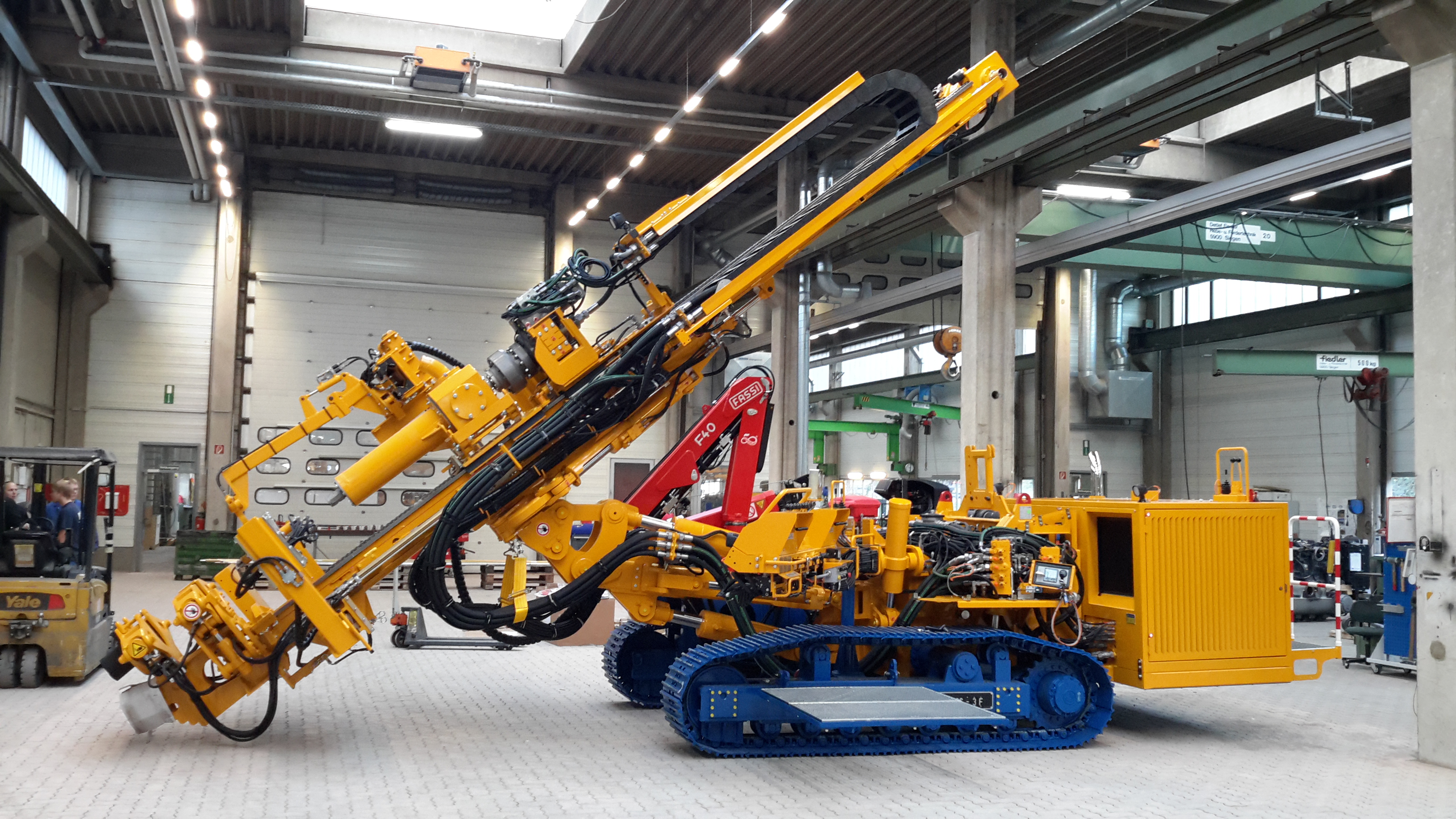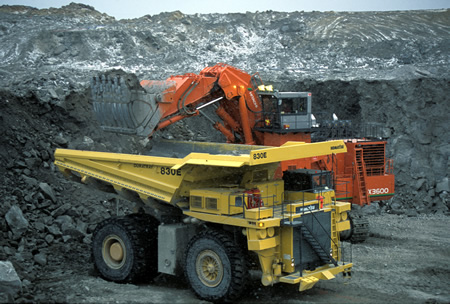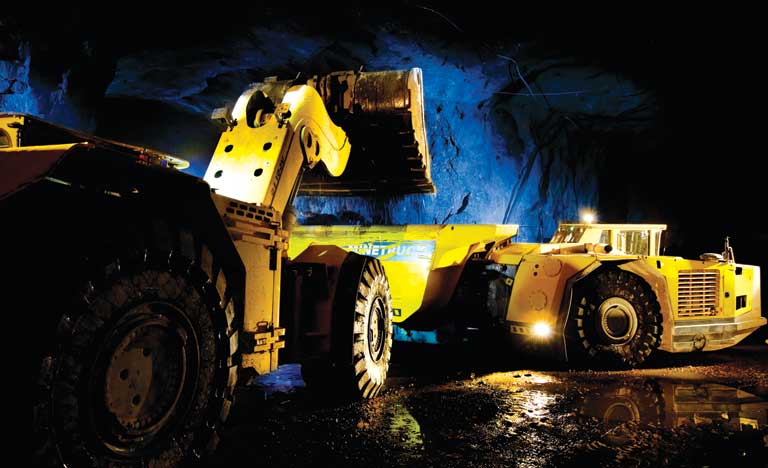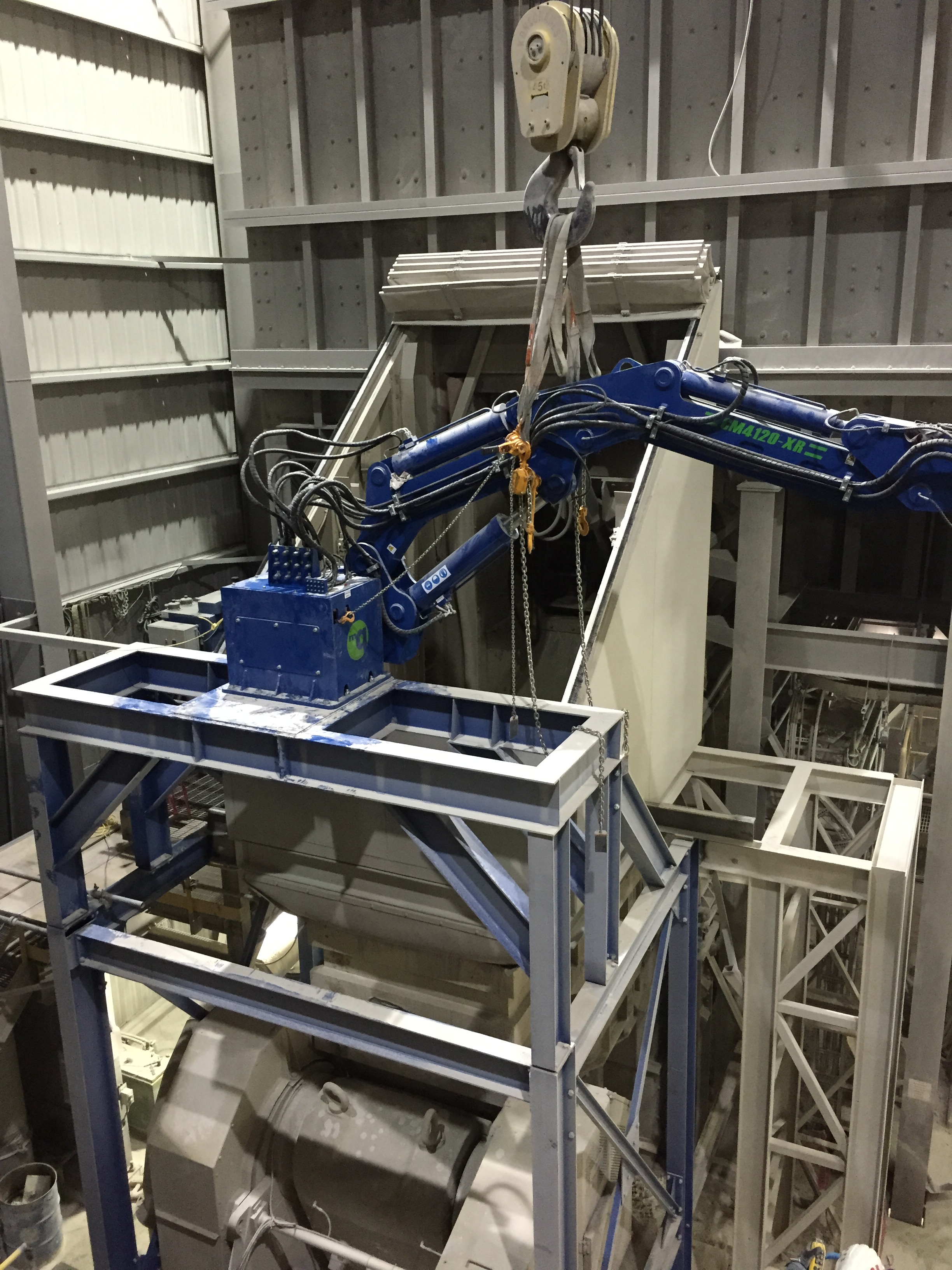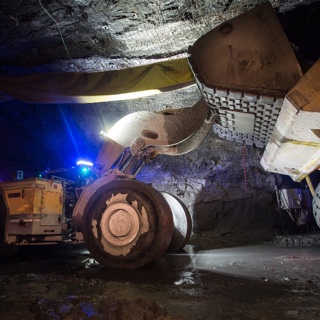Information
-
Equipment Type and Name
-
DDMI Equipment Designation #
-
Client / Site
-
Conducted on
-
Audit team led by:
-
Add signature
-
Location
Audit Details
Assessment Team
-
Team Member
Audit Team Member
-
Name
-
Company or Organization
-
Contact email or phone number
-
Signature
Equipment Details
-
Equipment Type (year, make, model)
-
Gross Weight
-
Primary Use (purpose, location(s), etc.)
-
Secondary Uses
Licensing
-
Does this equipment require a statutory license or training certification to operate?
-
License Class
-
License Type
-
Statutory Body
Servicing Checklist
-
Is there a copy of the manufacturer's operating manual available
-
Where is this kept?
-
Who has access to this information?
-
An appropriate action must be added in Section N: "General Comments & Notes"
Maintenance Scheduling
-
Have the service/maintenance requirements been obtained from the supplier?
-
An appropriate action must be added in Section N: "General Comments & Notes"
-
Has the information been set up in Ellipse for this piece of equipment?
-
An appropriate action must be added in Section N: "General Comments & Notes"
-
Have parts been uploaded in Ellipse for warehousing?
-
An appropriate action must be added in Section N: "General Comments & Notes"
-
Has a critical spares list including maximum/minimum inventory requirements been provided by the supplier?
-
An appropriate action must be added in Section N: "General Comments & Notes"
-
Does this equipment require servicing from an outside service provider?
-
Is a service contract in place?
-
An appropriate action must be added in Section N: "General Comments & Notes"
Supporting Documentation
-
List any documents from JHAs, SOPs, studies or similar equipment audits that were used to support this risk assessment
Document
-
Document Title
-
Document Type
-
Document Location
Section A - Operator Access
Operator Access
-
A1 - Steps, rungs and hand holds highly visible and allow 3 points of contact at all times (if applicable)
-
Minimize damage
-
A2 - Steps, rungs, ladders and platforms provide with non-slip surface and minimize rock/soil retention
-
A3 - Adequate provision made for operator regular access (pre-start inspection and general operation) and maintenance regular access (greasing, servicing). Review:
-
Engine oil level check and refill points
-
Hydraulic oil level check and refill points
-
Radiator fluid level check and refill points
-
Fuel refill points
-
Grease point access
-
RTSS C4 – Working at heights
-
A4 - Areas above 1.8m from ground level to have Fall Prevention AND / OR Fall Protection systems in place (depending on application):
-
Fall Prevention (to stop a person falling) – For hand railing, require level floor, top rail (between 910mm and 1070mm from floor), mid rail and toe boards (min 100mm high) and safe access and egress. Hand railing to take force of 0.9kN in any direction.
-
Fall Protection (to protect a person if they do fall) – engineered anchor point(s) (to withstand 5000lbs (2300kg) of load) for connecting personnel safety harness and lanyard.
-
Look at frequency of access, how stable is footing or platform, hand holds, and so on)
-
A5 - Areas above ground level where people need to access must to be assessed for the risk of falling, regardless of the actual height. Preference should be given to fall prevention controls (e.g. hand rails).
-
A6 - Pinch points exposing personnel to risk of injury are to be identified, minimized (eliminated where possible) and controlled.
-
Look at access to machine, as well as any booms, articulation, scissor lift action, hydraulic cylinders.
Section B - Operator's Controls & Functions
Operator's Controls & Functions
-
B1 - Operator controls located within zone of comfort and reach
-
NIOSH Control Design
-
B2 - Operating controls clearly marked to show function and mode of operation
-
NIOSH Control Design
-
B3 - If equipment is able to be self propelled, then an audible alarm is to be fitted, which is automatically activated when the equipment is in motion.
-
B4 - An Emergency Stop or method of emergency shutdown is provided, clearly marked and easily accessible to the operator.
-
B5 - Emergency Stop/Shutdown when operated latches either electrically or mechanically such that the actuation can only be reversed by a deliberate action and the equipment does not restart automatically
-
B6 - A service hour meter is fitted
-
B7 - The operator station should be free of sharp edges and protruding surfaces that could be struck by the operator.
-
Where these cannot be avoided or relocated, they must be adequately guarded, cushioned or otherwise protected.
Section C - Engine Compartment, Cooling & Fuel Systems
Engine Compartment, Cooling & Fuel Systems
-
C1 - All hydraulic oil, lubricating oil, and other oil circuit pipes and hoses within the engine compartment should:
-
Be constructed to OEM specification
-
Be routed away from hot engine surfaces
-
Be routed away from moving parts, supported and sleeved to give maximum protection
-
Be covered so oil from any leak can’t contact any exposed metal surface where temp exceeds 200°C under any condition of use
-
Be covered so that fuel from any leaks can’t contact any exposed metal surface that exceeds 80°C under any condition of use
-
If not possible to route out of the way, surface may require shrouding or heat shielding
-
C2 - All electrical wiring system are regulation and are protected / shielded from heat and damage
-
CSA M421-00 Use of Electricity in Mines with CSA C22.1 Canadian Electrical Code, Mine Act & Regulations part 13
-
C3 - All engine exhaust systems installed so that no flames or glowing particles can be emitted within the engine compartment under any condition of use
-
C4 - Radiator caps for cooling systems are fitted with a means of safely relieving pressure to prevent scalding personnel
-
C5 - Fuel filter elements enclosed and made of rugged construction with no glass componenents.
-
C6 - All high pressure fuel lines secured with approved clamps
Section D - Fluid Power Systems
Fluid Power Systems
-
D1 - Flexible hoses must be compatible with the hydraulic fluid used and maximum system pressure and temperature
-
OEM & CSA M423-M87 (R2000) Fire Resistant Hydraulic Fluids.
-
D2 - Where a hydraulic system incorporates an accumulator, the accumulator should be connected to the system using components of minimal length and adequate rating. Fittings should be located or otherwise guarded to provide mechanical protection.
-
D3 - A manual bleed valve should be fitted to allow pressure relief for maintenance. Fluid should return to tank. Self-draining accumulators are preferable. OEM requirements for bleed down of accumulators is required in maintenance manuals
Section E - Wheels
Wheels - Wheeled Equipment Only
-
E1 - Equipment to contain;
-
Park brake (mechanically activated holding power) or wheel chocks as per the wheel chock matrix.
-
E2 - The original equipment manufacturer of the equipment to which the rims and wheels are fitted should recommend and advise :
-
The maximum wheel loads, speeds and operating temperature etc.
-
Procedures for servicing wheel rims, including in particular, multi-piece wheel rims.
-
Clear limits of tolerances, permissible wear and other permissible defects of wheel and rim components.
-
Recommended tire pressures and tire wear.
Section F - Electrical
Electrical
-
F1 - A single electrical isolation lockout point to be provided, which when activated disables all electrical power supply to the equipment.
-
NWT Regs 10.21
-
F2 - Isolation of energy sources other than electricity must be able to be locked out and isolated
-
NWT Regs 10.21
-
F3 - All electrical wiring is to be protected from personnel contact. Electrical distribution boxes are to be lockable to restrict unauthorised entry.
-
RTSS C2 Electrical safety
-
F4 - Electrical safety devices such as earth leakage and overload protection should be installed on equipment
-
RTSS C2 Electrical safety
-
F5 - Where accessible, electrical wiring should be inspected for proper routing, pinch points, friction/rub points, proper connections, etc.
-
F6 - Battery must be adequately secured to prevent movement during operation
-
F8 - Battery fusing must be configured as close to the battery as is practical.
-
Equipment with multiple battery (auxiliary or ‘house’ battery) systems must be checked/verified for proper configuration. The vehicle master switch must remove voltage from each power supply system.
-
The operator station is to be wired low voltage (less than 32 volt AC).
Section G - Guarding & Shielding
Guarding & Shielding
-
G3 - Guards required on moving components which personnel can contact (drive belts, pulleys, sprockets, flywheels, pistons, tail shafts, conveyor belting). Guards must be sufficient to minimize chance of personnel contact.
-
NWT Regs 10.16
-
G4 - Guard or shields fitted in the vicinity of the exhaust, turbocharger and other hot surfaces to prevent both personnel contact, and fuel or oil spraying on hot surfaces (provided they don't trap fuel or oil around the exhaust or turbocharger).
-
NWT Regs 10.16
-
G5 - Guards required around every tail shaft to prevent a damaged or broken shaft from whipping around in a compartment or digging into the ground.
-
G6 - Guards should be designed so that operation and servicing can occur with the guards in place. Guards which need to be removed should be hinged to the machine. Guards should be easy to lift and hold without risk of finger injury
-
G8 - No modification has occurred to guards or shielding OR modifications have been signed off by an engineer and constructed/installed to that specification
Section H - Lighting
Lighting
-
H1 - All lights should be easily cleanable from ground level or otherwise safely accessible for cleaning by the operator
-
H2 - All support equipment designed to travel on a roadway should be provided with the following :
-
Dual indication lights readily visible from the rear of the equipment to show service brake operation.
-
Indicator lights should be fitted at the rear to warn other traffic of an intention to turn.
-
H3 - Equipment should display a Unit number.
-
H4 - Adequate reflectors and / or reflective tape should be provided on equipment to make it readily visible from any direction.
Section I - Maintenance
Maintenance
-
I1 - Shift safety and maintenance checklist to be provided (from manufacturer or supplier), for use as prestart inspection
-
NWT Regs 10.04
-
I2 - Manufacturer / supplier recommended ongoing inspection and maintenance program to be provided.
-
NWT Regs 10.04
-
I3 - For previously used equipment, a written record of past tests, inspections and maintenance work carried out.
-
NWT Regs 10.04
-
I4 - Are confined spaces marked with appropriate signage? Are there confined spaces which could be minimized or eliminated by design?
-
RTSS C5 – Confined spaces
Section J - Labelling & Instruction
Labelling & Instruction
-
J1 - Compliance plate, displayed in a prominent position, should show:
-
The serial number, manufacturer, model, date of manufacture
-
J2 - A list of all limits of equipment operation applying to the equipment should be available to the operator. Such limits should include, but not necessarily be limited to:
-
Maximum grade (%) - Loaded and Unloaded
-
Maximum cross grade (%) - Loaded and Unloaded
-
Maximum load (tonnes) - Level conditions and with a range of grades
-
J3 - Labels displaying warning at all accumulators that pressure must be safely released before work commences.
-
J4 - Labels displaying warning that "hearing protection must be worn" if noise level exceeds 83dB(A) at any location on the equipment.
-
J5 - Labels identify all high risk pinch points (including articulation areas) and coloured red
-
J6 - Labels identifying unauthorized access in areas above 110v DC or 32v AC
-
RTSS C2 Electrical safety
-
J7 - Towing instructions to be provided by the manufacturer, with towing points clearly identified.
-
J8 - Labeling of all controls including direction of movement where applicable
-
J9 - Labels should be made of non-corroding material and be attached with non-corroding screws, rivets, adhesive, etc.
Section K - Fire Control
Fire Control
-
K1 - Adequate size and type of portable external pressure fire extinguishers should be fitted and maintained on each vehicle. Fire extinguishers should be inspected daily and thoroughly cleaned, serviced, and maintained monthly. Extinguishers should also be compliant with yearly certifications and periodic hydrostatic testing requirements.
-
Mine Reg 10.42 (4)(5)
Section N - General Coments & Notes
General Coments & Notes
-
Insert Notes, coments and actions required along with agreed responsible person or organization
-
Note 1
-
Note 2
-
Note 3
-
Note 4
-
Note 5
-
Note 6
-
Note 7
-
Note 8
-
Note 9
-
Note 10
Section O - Action Items
-
Action / Non-Conformance including section and reference #
-
Proposed Controls
-
Responsible Person
-
Action / Non-Conformance including section and reference #
-
Proposed Controls
-
Responsible Person
-
Action / Non-Conformance including section and reference #
-
Proposed Controls
-
Responsible Person
-
Action / Non-Conformance including section and reference #
-
Proposed Controls
-
Responsible Person
-
Action / Non-Conformance including section and reference #
-
Proposed Controls
-
Responsible Person
-
Action / Non-Conformance including section and reference #
-
Proposed Controls
-
Responsible Person
